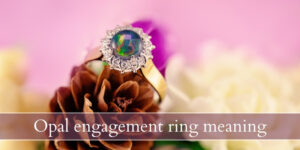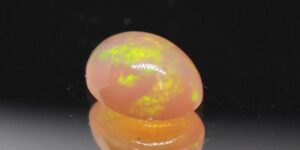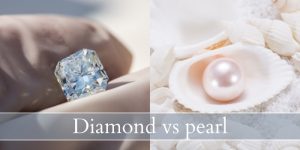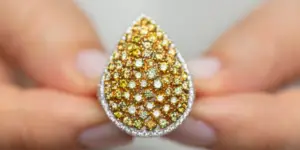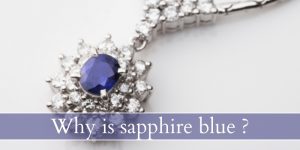Diamonds have a special effect on everyone, no matter who you are. There’s just something about a shiny, sparkly diamond that makes you stop and look a little longer. And there’s no stone that can match a diamond’s sparkle, no matter how you cut it or how many carats it has.
Diamonds are so coveted for being sparkly there are actually several diamond alternatives that have tried very hard to come close, but stop just short. So why do diamonds sparkle ? What makes them so special compared to other stones and imitation diamonds ? Let’s take a look.
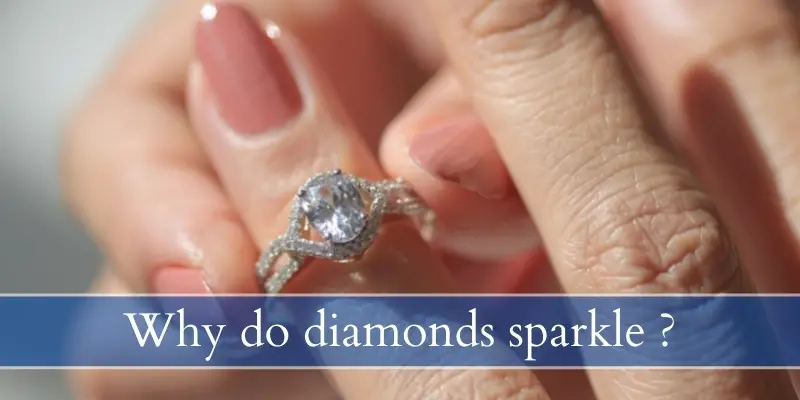
What makes diamonds sparkle ?
Diamonds sparkle due to a combination of the way they’re cut, the diamond’s refraction index, and the clarity of the diamond. Each of these factors influences how much light a diamond will reflect back into your eyes.
Other faceted stones cannot sparkle as beautifully as a diamond precisely because they have a bit of color in them. The clearer the stone, the greater the brilliance. Not all stones are the same and not all diamonds are the same, even if they’re cut the same way. Let’s take a closer look at just how and why a diamond sparkles.
A diamond’s cut offers a lot of refraction points
The first and foremost reason a diamond shines and sparkles is because it’s cut with a multitude of facets. The most common diamond cut – the round brilliant cut – has 58 facets (or sides). Each facet acts like a prism, splitting light into the 7 colors of the rainbow, and then reflecting them back to you.
The more facets, the more refraction and reflection, so the more sparkle you get.
Not all diamonds are perfectly cut. Some have uneven facets, some may be off center, or the craftsmanship may be poor. And some cuts, even if perfect, may not give you the glittering stone you’re after, because they have a long cut – such as the emerald cut or asscher, also known as step cut style.
A diamond has a higher refraction than other stones
Diamond cut styles are especially made and calculated to suit a diamond’s refraction index. This matters a lot, because it’s what makes a piece of glass, cut the same as a diamond, reflect and refract less light than a diamond.
When a beam of light hits a cut diamond, it enters through the top (usually) and then hits the sides. It then splits into several beams, each of them made up of the rainbow. If you’ll remember a bit of grade school physics, you know that white light is made up of the 7 colors of the rainbow.
A prism splits the white light into the 7 colors, and that is the ‘fire’ you see in a diamond. But you’re also looking to get some white light back, so a diamond’s brilliance also matters. This is where the diamond cuts come in.
They’re been calculated to enhance and work with the diamond’s refractive index, so you get the most amount of sparkle. Here’s a comparison of some refractive indexes, so you can get a feel of just how amazing a diamond really is:
- diamond refractive index – 2.42
- window glass (simple glass) – 1.52
- quartz – 1.46
- ice (frozen water, clear) – 1.31
- sapphire – 1.77
This makes diamond the only natural gemstone that can refract light in such a way as to create a stunning display. If you’re wondering about the common diamond alternatives, here they are:
- cubic zirconia – 2.15
- moissanite – 2.65
Read also: What Is A Cabochon ?
You’ve noticed that moissanite had a higher refractive index. This makes it sparkle a bit more than a diamond, though you will always find it has a more affordable price than a diamond of the same carat, cut, and clarity.
The main reason is because moissanite is difficult to find in nature (it does exist), but has been lab-grown for decades. This keeps the prices down, and and also means it can be used to dupe uninformed buyers.
You may be wondering what’s wrong with moissanite. In the long run, really there’s nothing wrong with it. You can easily get your engagement ring with moissanite and most people wouldn’t know, and it would also stand the test of time.
However people do have a preference for diamonds, and diamonds are simply tougher and can withstand nearly anything, more than moissanite can.
A diamond’s clarity has a role in how well the light disperses
Another important point is the clarity of the diamond. A clear diamond with zero impurities will refract and reflect light perfectly. A cloudy diamond or one with impurities will absorb some of that light, or create more shadows than necessary. This means your diamond will appear dull or darker, no matter the cut.
The most common versions of a diamond that isn’t perfectly clear are salt and pepper diamonds, and white diamonds. One has black and white imperfections within it, leading to a slightly grey appearance, while the other has only white impurities and has a milky appearance.
A diamond’s cut quality is key to sparkle and optics
Whenever you look at a diamond you see its overall shape, and its many facets. Those facets have to:
- be perfectly aligned to reflect and refract light
- be perfectly polished to let in as much light as possible
- form the right height/depth for the diamond shape
There are a few more things that fall under ‘cut quality’ but are not facets, such as table to culet alignment, girdle thickness, closed/open culet, but they matter as well.
The point is that a diamond is like a series of tiny mirrors, all meant to bounce the light inside the diamond and then back through the table, to your eyes. A diamond’s sparkle and optics is are heavily dependent on the cut quality (mostly the facets).
What diamond cut has the most sparkle ?
The sparkliest diamond cut is the round brilliant cut. It has 58 facets and it’s THE most popular diamond cut of all time. This cut was invented back in 1919 by Marcel Tolkowsky who calculated its facets to optimize a diamond’s refractive index. It was especially created to work with and enhance a diamond’s ability to refract and reflect light, and to this day it is still the optimal cut.
You may be tempted to think that more facets mean more sparkle. And in a way, that’s true. But it also matters how deep or shallow the entire diamond is. A very shallow diamond will refract the light but won’t reflect it towards your eyes, leading the the appearance of less sparkle, or just brilliance (just white light).
A deep cut, so a taller diamond (top-down view) will not reflect enough light back out through the top of the diamond, towards your eyes. This will make the diamond appear darker, and smaller. In some cuts it may result in more rainbow light (fire)
So if you’re looking for a prefect, shiny diamond look for one that has Ideal cut rating. This not only ensures it’s not too shallow or too deep, it also ensures the rest of the geometry and mathematics of the diamond’s cut is well thought out and executed.
In terms of which cut styles to get, round brilliant is the top seller. After that any cut is going to sparkle a lot, as long as it’s not a step-cut (emerald, asscher, or baguette).
If you’re unfamiliar with step cuts, those are diamond cuts that produce long flashes of light, instead of smaller sparkles. The result is less sparkle, because there are less prisms in the diamond. But a diamond’s clarity is put on display with this type of cut, because you can see into it much better. The name ‘step cut’ comes from the appearance of the cut, like a row of steps leading into the stone.
What makes diamonds different colors ?
A diamond’s color is dictated by trace amounts of elements within it, and each element produces a different color. Natural diamonds come in different colors, or rather most diamonds don’t come in a clear color, but it’s only the perfectly clear ones that get the spotlight. Understandable, since those are the most brilliant and beautiful diamonds, and tradition dictates that diamonds are white or clear.
However diamonds can and do end up in various colors, yellow being the most common one (due to nitrogen). In fact one of the diamond ratings you will look at when purchasing your very own is the color. The color range and grade goes from D (perfectly clear, no color at all) to Z (obvious yellow tint). Of course, the differences are very slight and the naked eye won’t really be able to tell the diamond has a yellow tint up until the K grade.
Diamonds that come in other colors are called fancy diamonds, and they’re graded completely opposite from white diamonds. The brighter and more vivid the color, the better the grading, from Faint to Fancy Vivid.
Yellow diamonds owe their color to nitrogen particles, and they can range all the way to a light brown.
Pink diamonds don’t have a clear explanation and there’s still an ongoing debate as to why they happen. The current scientific theory is that pink diamonds are somehow warped, due to being formed under even more intense pressure than regular white diamonds.
Red diamonds are the rarest diamonds, and they are just as poorly understood as pink diamonds. These are the most expensive diamonds, and they are usually small because of this.
Blue and green diamonds form when the element boron is present within the crystal lattice, in the form of impurities. A blue diamond is not as deeply blue as a sapphire, and a sapphire owes it blue color to iron and titanium.

I’m the main author for jewelrymaterialguide.com. I started this site after we did tons of research before our wedding and noticed that there is information about rings, jewelry, and so on that is really hard to find on the internet.

